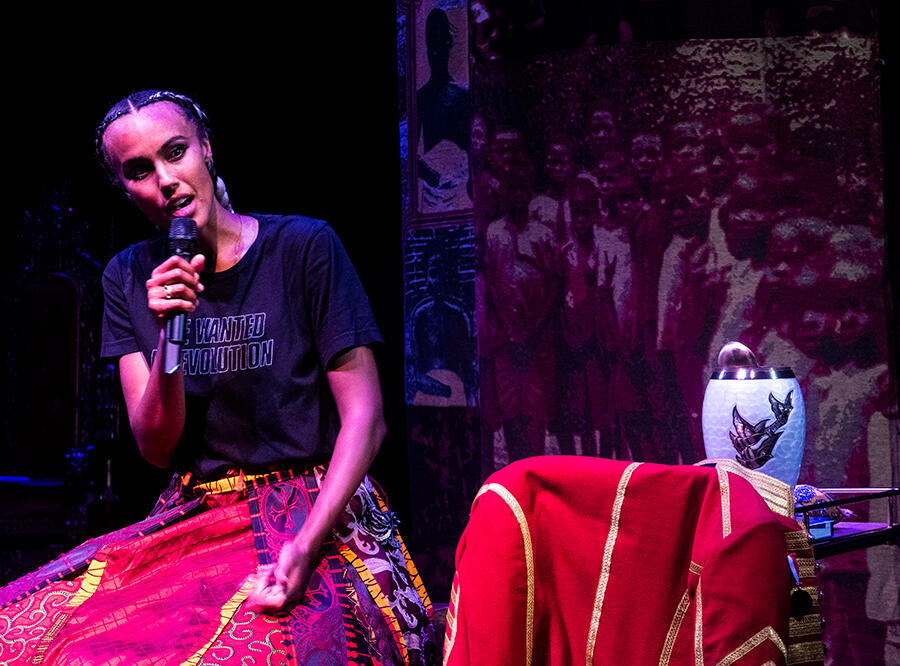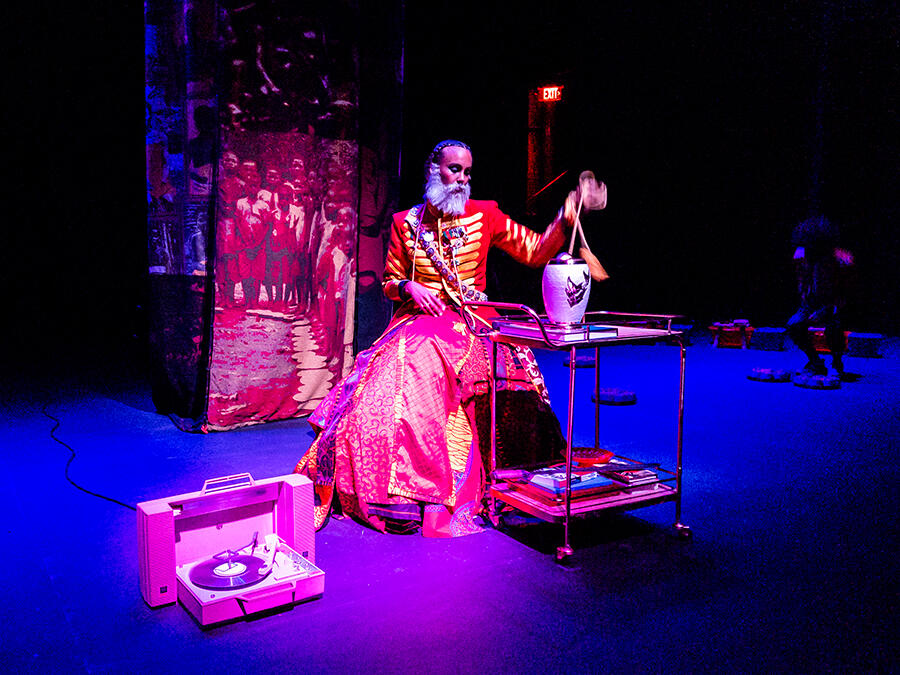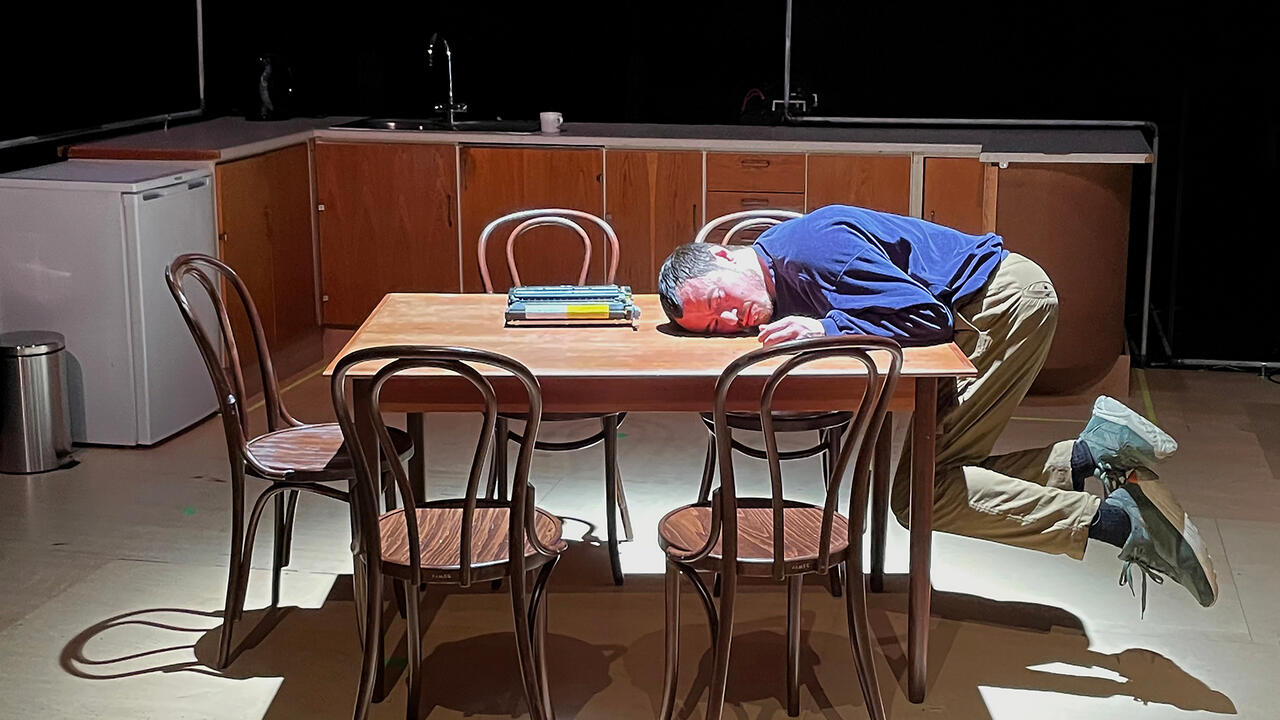Kaneza Schaal’s Anti-Monument to King Leopold II
The artist’s latest one-act play considers the social and psychic repercussions of Belgium's colonialist project
The artist’s latest one-act play considers the social and psychic repercussions of Belgium's colonialist project

For 150 years, a life-size statue of Europe’s most notorious colonizer, King Leopold II, haunted the quaint and leafy streets of Ekeren, a suburb of Antwerp. Erected in 1873, this sandstone effigy was the first of 24 monuments installed across Belgium to commemorate a monarch whose brutal, two-decade reign over the Congo Free State was characterized by forced labour, punitive amputation and the death of more than 10 million Congolese. It was also the first Belgian statue to be forcibly removed after demonstrators set it ablaze and doused it in red paint during an international wave of Black Lives Matter protests in the summer of 2020. Since that time, like many other Western nations, Belgium has faced a reckoning with its racist past and present.
New York-based theatre artist Kaneza Schaal’s newest one-act play, KLII, which closed out the 2021–22 season at the Roy and Edna Disney/CalArts Theater (REDCAT) in Los Angeles this past weekend, intervenes in the monuments discourse with a flesh-and-blood resurrection or, as the programme notes, ‘an exorcism’ of the villainous King Leopold II. In doing so, the show invites us into a more meaningful consideration of the lasting social and psychic repercussions of the colonialist project.

Designed and co-directed by Schaal’s long-time collaborator, artist and writer Christopher Myers, KLII collages together dance, archival recordings, 19th-century opera and autobiography with a set of iconic, anti-imperialist texts, including Mark Twain’s King Leopold’s Soliloquy (1905), poet Aimé Césaire’s Discourse on Colonialism (1950) and Patrice Lumumba’s 1960 Congolese Independence Speech. This bricolage of source materials and media can be seen as a formal nod to the experimental theatre tradition in which Schaal is steeped. She first worked as a performer with influential New York ensembles The Wooster Group and Elevator Repair Service, and has directed a suite of groundbreaking performances, including Go Forth (2016), Jack & (2018) (both with Myers) and Triptych (2019) with composer Bryce Dessner. KLII is unique in this trajectory for the way it features Schaal as both co-director and lead performer. (Ian Askew and Sifiso Mabena round out the cast.) At REDCAT, the performance opens with Schaal costumed as the bearded Leopold. She plays him greedy, cannibalistic and decadent to the point of rot; the reviled monument coming to life.

In her director’s note for KLII, Schaal stresses the importance of Césaire’s and Lumumba’s texts to her project, tracing an arc from the evils of colonial rule to the ‘flush of revolutionary thought and practice that flooded between Black people internationally in the mid 20th century and ignited movements of solidarity between formerly enslaved and colonized peoples around the world.’ To this end, and during Schaal’s re-enactment of Twain’s King Leopold’s Soliloquy – which the artist executes Benito Mussolini-style from a microphone-laden balcony high above the audience – the interjections of Césaire’s revolutionary prose (performed by Askew) serve as the necessary counterweight to the king’s maniacal ravings. He warns: ‘A civilization that chooses to close its eyes to its most crucial problems is a sick civilization. A civilization that plays fast and loose with its principles is a dying civilization.’

Myers’s mise-en-scène likewise articulates this collision as it visually privileges East African aesthetics (a large hoop skirt comprised of beautiful batik fabrics, small personal objects once belonging to Schaal’s Tutsi grandfather) alongside those representing the colonial powers (an electric fly swatter, a gilded throne, a red and gold military jacket and a prosthetic severed hand in a glass candy dish, which Schaal-as-Leopold greedily devours early in the performance). The centrepiece of the KLII set – a fabric banner featuring British missionary Alice Seely Harris’s harrowing turn-of-the-century photographs of limbless Congolese men, women and children – serves as irrefutable documentary evidence of Leopold’s sadistic regime. It also raises attendant questions around those multi-national, agro-colonialist corporations – soap giant Unilever Global is singled out by Schaal at one point – who quietly built their fortunes on the backs (and limbs) of the subjugated.

Mercifully, it is Schaal rather than King Leopold who has the last word in KLII. More than halfway through the piece, in a moment of pure estrangement, Schaal drops the Leopold character and asks the back of house to bring up the lights. While removing her eye makeup and prosthetic beard at a makeshift dressing table at the front of the stage, Schaal begins to address the audience directly. She speaks affectionately of her young daughter, of her fears during the early days of the pandemic and of her heroic grandfather, Murara, who fled Rwanda with his wife and children to start a small guest house in Burundi, thereby ensuring the safety of the generations who followed. In the end, it is Murara’s story that we carry home with us. It is Murara for whom Schaal builds this tender monument.
Main image: Kaneza Schaal, KLII, 2022, performance still. Courtesy: REDCAT, Los Angeles; photograph: Christopher Myers























